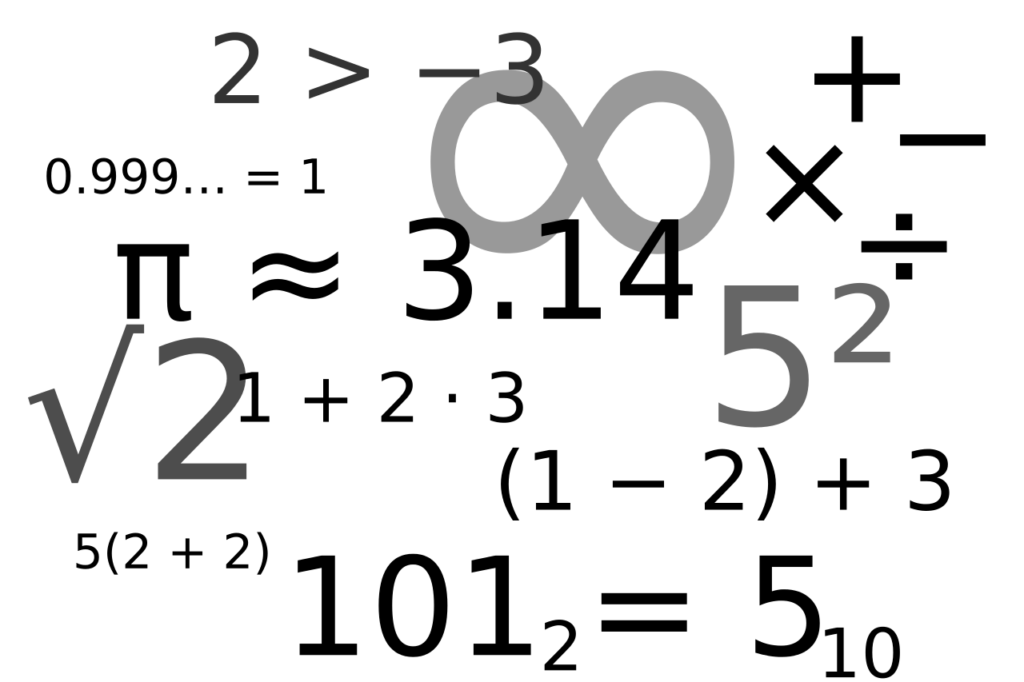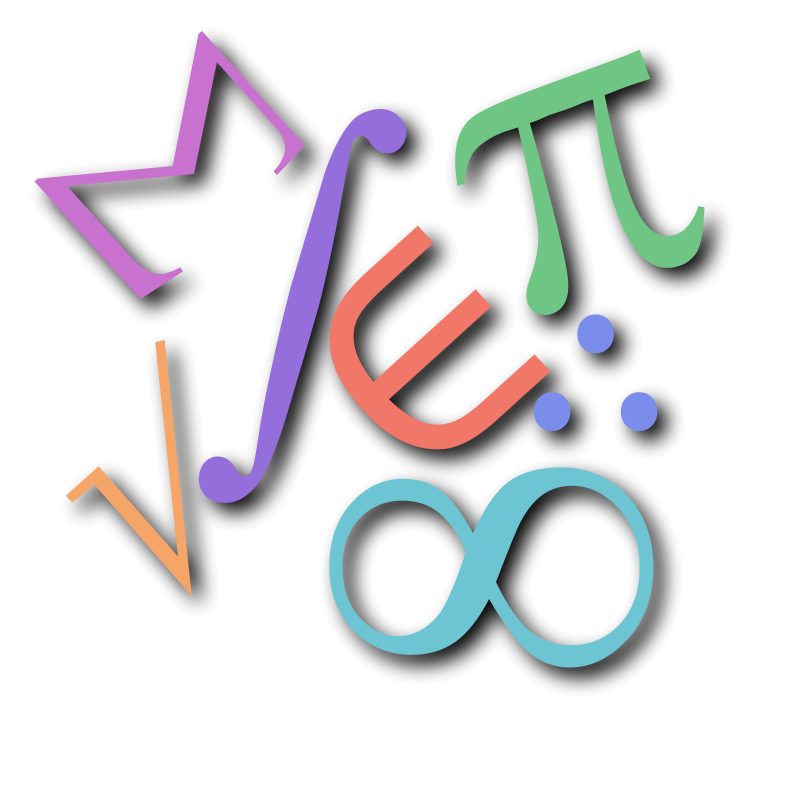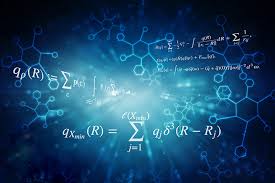H2 Math Topics
In the pursuit of academic excellence, students embarking on their A-Level journey encounter a rigorous curriculum, and a cornerstone of this endeavor is the H2 Maths syllabus. This comprehensive guide is designed to provide you with a holistic understanding of the MOE 2021 H2 Maths Syllabus (9758).
We will delve into the significance of H2 Mathematics in preparing students for university courses and the pivotal role a proficient H2 Math tutor plays in shaping their mathematical prowess.
Need Help? Click Here To Request A H2 Maths Home Tutor
Unraveling the MOE H2 Math Topics
The Ministry of Education (MOE) introduced the H2 Maths Syllabus in 2021, denoted as 9758, aiming to equip students with the mathematical acumen necessary for a diverse array of university courses.
As a quintessential component of the A-Level curriculum, this syllabus focuses on nurturing mathematical thinking and reasoning skills, which are indispensable for advanced mathematical learning. Understanding the MOE 2021 H2 Maths Syllabus involves exploring the following key areas:
- Functions and Graphs: A detailed exploration of functions, graphs, and transformations, in addition to understanding equalities and inequalities.
- Sequences and Series: Unpacking the essence of sequences and series, and their relevance in the mathematical realm.
- Vectors: Delving into the basic properties of vectors in both two and three dimensions, scalar and vector products, and the applications of three-dimensional vector geometry.
- Introduction to Complex Numbers: Understanding complex numbers expressed in both Cartesian and polar form.
- Calculus: A comprehensive study of differentiation, Maclaurin series, various integration techniques, definite integrals, and differential equations.
- Probability and Statistics: Exploring probability, discrete random variables, the significance of the normal distribution, the intricacies of sampling, hypothesis testing, and the role of correlation and linear regression in statistics.
The Importance of H2 Mathematics
The H2 Mathematics syllabus is not just another set of equations and graphs; it is the cornerstone of a student’s mathematical journey and the key that unlocks a multitude of university courses. Here’s why H2 Mathematics holds paramount importance:
- Foundation for University Courses: A strong foundation in mathematics is a prerequisite for various university courses, particularly in fields such as mathematics, sciences, engineering, and related disciplines. Without a robust understanding of H2 Mathematics, students may find themselves ill-equipped for the challenges that lie ahead in these programs.
- Development of Critical Skills: H2 Mathematics fosters critical thinking, problem-solving, and analytical skills, which are invaluable in academia and life beyond. It equips students with the ability to dissect complex problems and develop elegant solutions.
- Appreciation of Mathematics: Through applications of mathematics, students not only grasp the concepts but also develop an appreciation for the beauty and relevance of mathematics in the real world. This transcends mere academic knowledge and has practical applications in various fields.
The Role of a Good H2 Math Tutor
While the H2 Maths syllabus is comprehensive, having a proficient tutor can make a world of difference in a student’s journey. An experienced H2 Math tutor can:
- Provide Clarifications: Clarify doubts and misconceptions, ensuring that students have a strong grasp of the fundamental concepts.
- Offer Guidance: Provide guidance on the best study strategies and techniques to excel in the subject.
- Boost Confidence: Boost students’ confidence by instilling a deeper understanding and the ability to tackle complex problems.
- Prepare for Exams: Equip students with the necessary skills and knowledge to excel in exams and assessments.
What’s Next?
In the subsequent sections of this comprehensive guide, we will delve deeper into the specific topics outlined in the H2 Maths syllabus, starting with Section 2: Functions and Graphs. Let’s embark on this mathematical journey and explore the intricacies of each topic, one by one.
Need Help? Click Here To Request A H2 Maths Home Tutor
Functions and Graphs
As we continue our journey through the MOE 2021 H2 Maths Syllabus (9758), we dive headfirst into Section 2: Functions and Graphs. This section is a fundamental building block of H2 Mathematics, and understanding it is crucial for mastering more advanced mathematical concepts. Here, we will explore the definition of functions, their importance and applications, and delve into the fascinating world of graphs and transformations.
Understanding Functions
Definition of Functions
To begin our exploration, let’s define what functions are in the context of mathematics. A function is a mathematical relation that assigns each element in one set (the domain) to exactly one element in another set (the codomain). In simpler terms, it’s a rule that takes an input and produces a unique output.
- Function Notation: Functions are typically denoted by f(x), where ‘x’ represents the input variable.
Importance and Applications
Why do we need to understand functions? Functions are the bedrock of mathematics and have extensive applications in various fields:
- Scientific Modeling: In fields like physics and engineering, functions are used to model real-world phenomena. For example, you can use a function to describe the motion of a falling object.
- Economics: Economic models often rely on functions to represent relationships between variables, such as supply and demand.
- Computer Science: Algorithms and programming heavily depend on functions to perform various tasks and calculations.
Graphs and Transformations
Explaining Different Types of Graphs
Graphs are a visual representation of functions and play a pivotal role in mathematics. There are various types of graphs, each with its unique characteristics:
- Linear Graphs: Represented by straight lines, linear graphs depict proportional relationships.
- Quadratic Graphs: These have a U-shaped curve and represent quadratic functions.
- Exponential Graphs: Exponential functions result in curved graphs, either increasing or decreasing exponentially.
- Trigonometric Graphs: Sine, cosine, and tangent functions create periodic wave-like graphs.
Transformations and Their Impact
Transformations alter the shape, size, or position of a graph without changing its underlying function. Common transformations include:
- Translation: Shifting the graph left, right, up, or down.
- Dilation: Stretching or compressing the graph vertically or horizontally.
- Reflection: Flipping the graph over a line.
- Rotation: Turning the graph around a point.
Understanding these transformations is essential for solving complex mathematical problems and visualizing changes in functions.
Equations and Inequalities
In the context of H2 Mathematics, equations and inequalities are closely tied to functions and graphs. These mathematical expressions help us establish relationships between variables and solve real-world problems. Inequalities, in particular, provide insights into when certain conditions are met or not met.
Need Help? Click Here To Request A H2 Maths Home Tutor
Sequences and Series
Welcome to the captivating world of Section 3: Sequences and Series within the MOE 2021 H2 Maths Syllabus (9758). This segment takes us on a mathematical journey filled with patterns, progressions, and the significance of sequences and series in the realm of H2 Mathematics.
Overview of Sequences and Series in H2 Maths
Before we delve into the intricate details, it’s essential to grasp the fundamental concepts of sequences and series.
What Are Sequences?
- Definition: A sequence is an ordered list of numbers or terms that follow a specific pattern or rule. These patterns may be explicit, like arithmetic sequences, or implicit, like geometric sequences.
- Notation: A typical sequence is denoted as {a₁, a₂, a₃, …}, where a₁, a₂, a₃, etc., represent the terms of the sequence.
What Are Series?
- Definition: A series is the sum of the terms of a sequence. In essence, it is the accumulation of the numbers in a sequence.
- Notation: A series is usually represented as Σaₙ, where Σ denotes summation and aₙ represents the terms of the sequence.
Importance and Applications of Understanding Sequences and Series
Understanding sequences and series is not just a mathematical exercise; it has practical applications across various domains. Here’s why they matter:
Mathematics and Science
- Calculating Limits: Sequences play a crucial role in calculus, particularly when dealing with limits and convergence.
- Modelling Phenomena: Series are used to model and analyze real-world phenomena in physics, chemistry, and biology.
Finance and Economics
- Investment and Loans: In finance, series are employed to calculate future values of investments and the cost of loans.
- Economic Analysis: In economics, series help analyze trends and forecast economic data.
Computer Science
- Algorithm Design: In computer science, understanding sequences and series is vital for designing algorithms and data structures.
Engineering
- Signal Processing: Engineers use series in signal processing for tasks such as filtering and data compression.
Common Types of Sequences and Series
To get a glimpse of the variety in sequences and series, let’s explore some common types:
- Arithmetic Sequences: These have a common difference between terms, making it easy to find subsequent terms.
- Geometric Sequences: These have a common ratio between terms, creating exponential growth or decay.
- Harmonic Series: A classic series that diverges, its partial sums approach infinity.
- Taylor Series: A series representation of a function, essential in calculus.
Key Takeaways
- Sequences and series are fundamental mathematical concepts that hold practical applications in multiple fields.
- Sequences represent ordered lists of numbers, while series are the summation of those numbers.
- A variety of sequence and series types exist, each with unique properties and applications.
Need Help? Click Here To Request A H2 Maths Home Tutor
Vectors
In the intricate world of mathematics, vectors are the unsung heroes that play a significant role in understanding spatial relationships and solving complex problems. Section 4: Vectors within the MOE 2021 H2 Maths Syllabus (9758) is a gateway to comprehending these versatile mathematical entities. Let’s embark on a journey through basic properties of vectors, scalar and vector products, and the fascinating realm of three-dimensional vector geometry.
Subsection 4.1: Basic Properties of Vectors
Introduction to Vectors in Two and Three Dimensions
Vectors are mathematical quantities that have both magnitude and direction. They are commonly used to represent physical quantities such as velocity, force, and displacement. Here’s a glimpse into the fundamental properties of vectors:
- Magnitude: The magnitude of a vector represents its length in a given direction.
- Direction: Vectors have a specified direction, often defined by an angle relative to a reference axis.
- Addition and Subtraction: Vectors can be added or subtracted, resulting in a new vector.
- Scalar Multiplication: Vectors can be multiplied by scalars, changing their magnitude but not their direction.
Understanding these properties is crucial for solving problems that involve vectors in various fields, from physics to engineering.
Properties and Characteristics
Vectors exhibit unique characteristics that distinguish them from other mathematical entities:
- Orthogonality: Two vectors are orthogonal if they are perpendicular to each other.
- Unit Vectors: Unit vectors have a magnitude of 1 and are often used to represent directions.
- Collinearity: Collinear vectors lie on the same line, with the same or opposite directions.
- Component Form: Vectors can be represented as a linear combination of their components in different directions.
Subsection 4.2: Scalar and Vector Products in Vectors
Explaining Scalar and Vector Products
Vectors can interact with each other through two fundamental operations: scalar and vector products.
- Scalar Product (Dot Product): The scalar product of two vectors yields a scalar value. It is defined as the product of the magnitudes of the two vectors and the cosine of the angle between them.�⋅�=∣�∣ ∣�∣ cos(�)
- Vector Product (Cross Product): The vector product of two vectors results in a new vector that is orthogonal to the plane defined by the original vectors. It is crucial in understanding the right-hand rule and is often used in physics to calculate moments and torques.�×�=∣�∣ ∣�∣ sin(�) �
The scalar and vector products serve as essential tools in solving problems related to forces, motion, and electromagnetic fields.
Subsection 4.3: Three-Dimensional Vector Geometry
Applications of Three-Dimensional Vector Geometry
Moving from two dimensions to three adds a new layer of complexity to vector geometry. Here are some key applications of three-dimensional vector geometry:
- Spatial Analysis: In physics and engineering, vectors are used to describe forces and motion in three-dimensional space.
- Electromagnetic Fields: In the study of electromagnetism, vectors are employed to represent electric and magnetic fields.
- Geometry: Vectors are used to determine angles, distances, and positions in three-dimensional shapes.
- Linear Algebra: Three-dimensional vectors play a significant role in linear algebra and matrix operations.
Understanding three-dimensional vector geometry is essential for tackling real-world problems that involve spatial relationships.
Key Takeaways
- Vectors are mathematical quantities with both magnitude and direction.
- Basic properties of vectors include magnitude, direction, addition, and scalar multiplication.
- Scalar and vector products are fundamental operations between vectors.
- Three-dimensional vector geometry is vital in various fields, from physics to engineering.
Need Help? Click Here To Request A H2 Maths Home Tutor
Introduction to Complex Numbers
As we delve deeper into the MOE 2021 H2 Maths Syllabus (9758), we arrive at Section 5: Introduction to Complex Numbers. Complex numbers, both in Cartesian and polar form, are captivating mathematical entities that find applications in various fields. Let’s unlock the secrets of these intriguing numbers and explore their significance in the world of mathematics.
Subsection 5.1: Complex Numbers in Cartesian Form
Definition and Representation
Complex numbers are mathematical constructs that extend the realm of real numbers. In their Cartesian form, they are represented as a + bi, where a and b are real numbers, and i is the imaginary unit, defined as the square root of -1. Key aspects of complex numbers in Cartesian form include:
- Real and Imaginary Parts: The real part (a) and the imaginary part (b) are the building blocks of a complex number.
- Addition and Subtraction: Complex numbers are added or subtracted just like real numbers.
- Multiplication: Multiplying complex numbers involves distributing and simplifying.
- Conjugate: The conjugate of a complex number is obtained by changing the sign of its imaginary part.
Complex numbers in Cartesian form provide a powerful tool for solving equations, especially in electrical engineering and physics.
Subsection 5.2: Complex Numbers in Polar Form
Exploring Polar Form and Its Significance
Polar form is an alternative way to represent complex numbers, and it’s particularly useful in dealing with multiplication and division of complex numbers. In polar form, a complex number is represented as r(cosθ + isinθ), where r is the magnitude of the complex number, and θ is the argument or phase angle.
- Magnitude and Argument: The magnitude (r) gives the distance of the complex number from the origin in the complex plane, while the argument (θ) provides the direction.
- Multiplication and Division: In polar form, multiplying and dividing complex numbers involves multiplying or dividing their magnitudes and adding or subtracting their arguments.
Polar form simplifies many complex number operations, making it a valuable tool in engineering and mathematical analysis.
Need Help? Click Here To Request A H2 Maths Home Tutor
Conclusion On H2 Math Topics
In this comprehensive guide to the H2 Maths Syllabus, we’ve explored various facets of advanced mathematics that are essential for A-level students. From the foundational understanding of functions and graphs to the fascinating world of complex numbers, vectors, calculus, and probability, each section offers valuable insights into the mathematical landscape.
- Section 1 provided an overview of the MOE 2021 H2 Maths Syllabus, emphasizing the importance of H2 Mathematics for university courses and the role of a good H2 Math tutor.
- Section 2 delved into the realm of functions and graphs, covering topics like definitions, applications, graph types, and the impact of transformations.
- Section 3 focused on sequences and series, highlighting their significance and applications.
- Section 4 introduced the world of vectors, including their basic properties, scalar and vector products, and applications in three-dimensional vector geometry.
- Section 5 explored complex numbers in both Cartesian and polar forms, emphasizing their importance and applications.
This guide serves as a valuable resource for students, educators, and anyone interested in understanding the complexities and beauty of advanced mathematics. If you’re looking for more information or assistance in navigating the H2 Maths Syllabus, don’t hesitate to reach out. Mathematics is a journey, and we’re here to help you every step of the way.
Need Help? Click Here To Request A H2 Maths Home Tutor
H2 Math Topics by Tuition Domain






